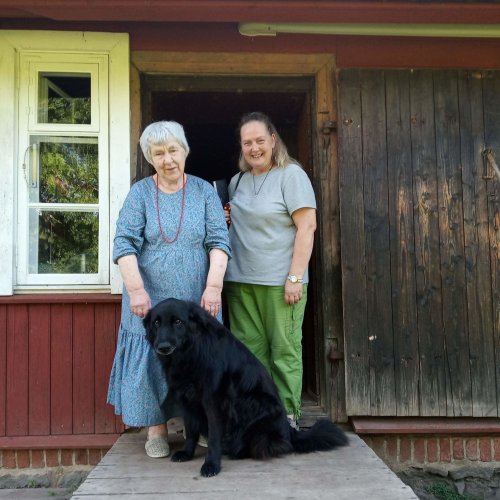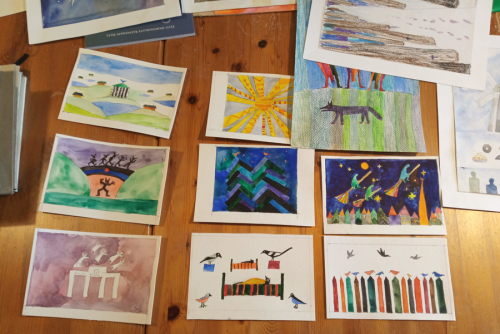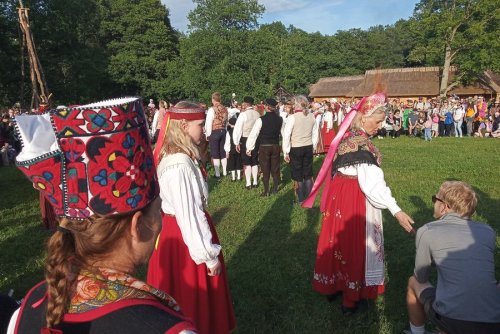
Anu Raud in front of her home and Mari Ann Oviir
After a thorough tour of the premises, she insists on accompanying us to the sauna next to a pond, then into her woods “where many wolves pass by”, where we sample a few handfuls of wild strawberries. We go back upstairs into a wooden attic that serves as a bookshop.
Now in her 80s, she is still very active. In addition to trainees, she welcomes many visitors. She is responsible for correspondence and the follow-up of various projects and exhibitions. “I don’t have enough time to work. What’s more, when I’m drawing, I’m torn by the urge to write. When I write, the desire to draw comes back!” Single and childless, she has devoted herself entirely to promoting traditional culture and passing it on to young people.
She finds her inspiration in traditional local motifs, but also by looking at her surroundings and through her window. A spirit of childhood and poetry enables her to give depth to the few elements drawn from nature and traditional symbols found on textiles that make up her designs and tapestries. Throughout her life, she has collected textiles from all over the country. Every region, every village, every farm has its own particular patterns and colors. Linen and wool were dyed with lichen, moss and other plants. She installed her collection in the former Heimtali school, which she bought in 1991. She handed this small museum over to the National Museum of Tartu, of which it is now a branch.

Anu Raud’s drawings in her workshop
“The key to happiness? Limit your needs, practice sobriety, live a rustic lifestyle, avoid accumulating things or traveling as much as possible. One day, when I was planning to make a bedside rug, I said to myself: why make an ordinary bedside rug for something that catches our first glance every time we get up. A beautiful bedspread could light up the whole day! That’s been the inspiration for my work ever since. It’s important to have beautiful objects around us that give joy and light.”
“In summer, we have more energy to work with. The light also helps the elderly whose eyesight is failing. I still want to write about the tradition of crosses carved into trees. One interpretation is that they chase away the spirits of the dead and prevent them from returning to the living. But there are other interpretations. We make beautiful knitted wool mittens and give them to celebrities to wear in public. This will promote our popular culture. In the past, priests had to wear woollen gloves during mass or funerals because it was so cold. The eight-pointed star (Kaheksa Kand or eight heels) is a beloved motif in our country”.

Traditional Estonian dances at the Roca al Mare Open Air Museum in June 2024
 TAIZÉ
TAIZÉ